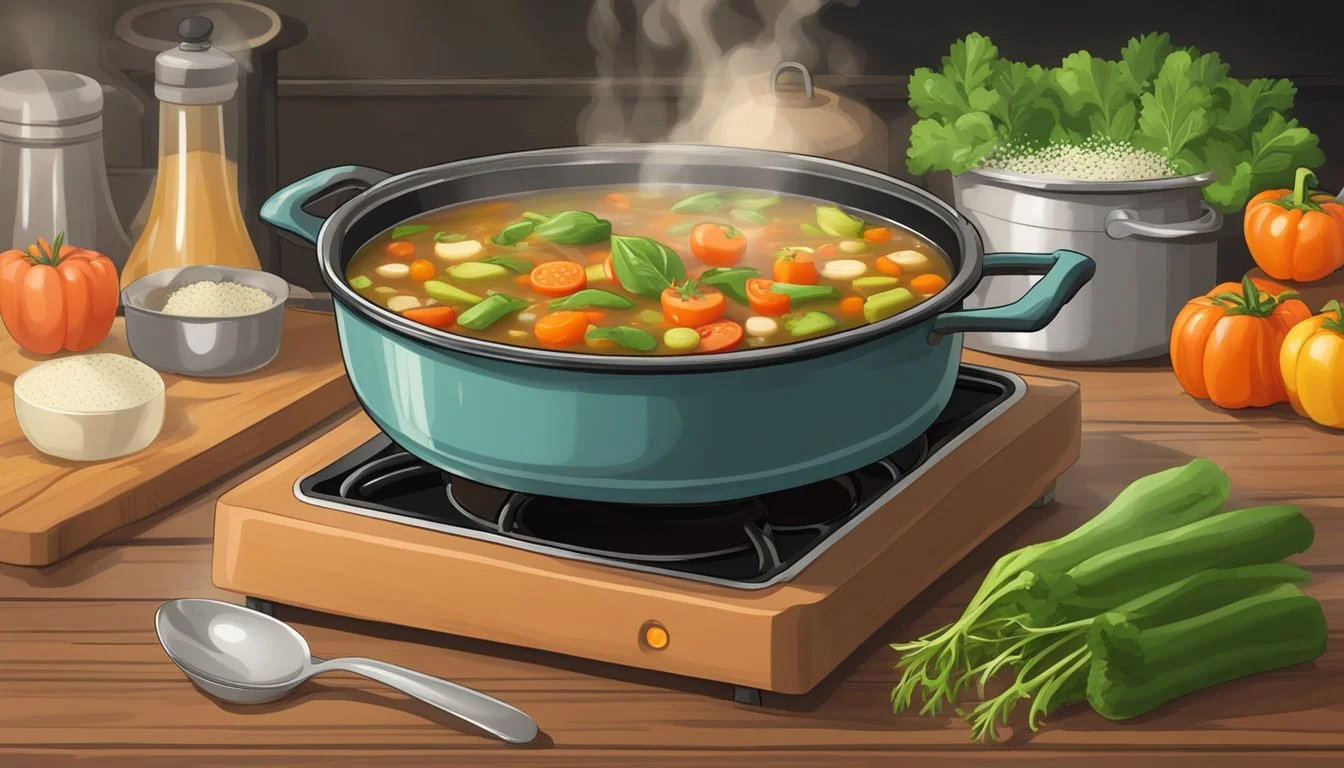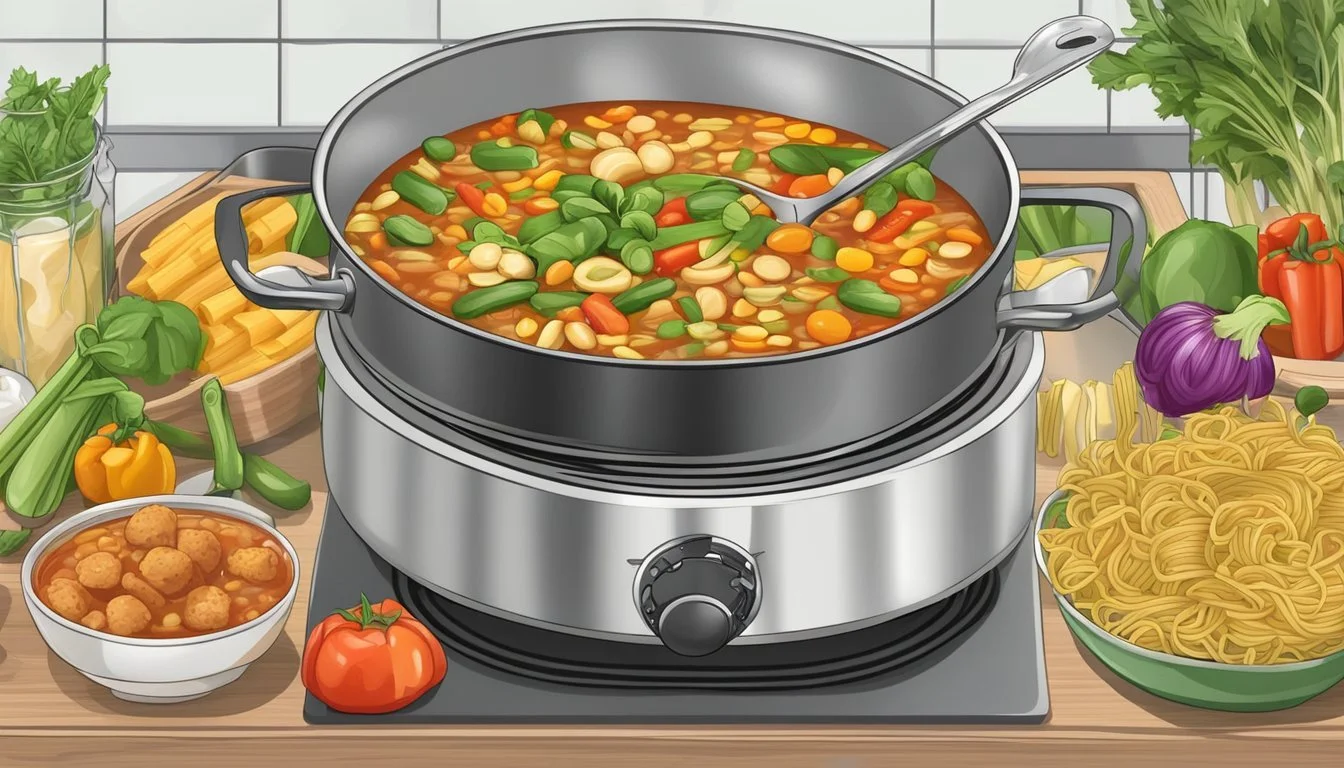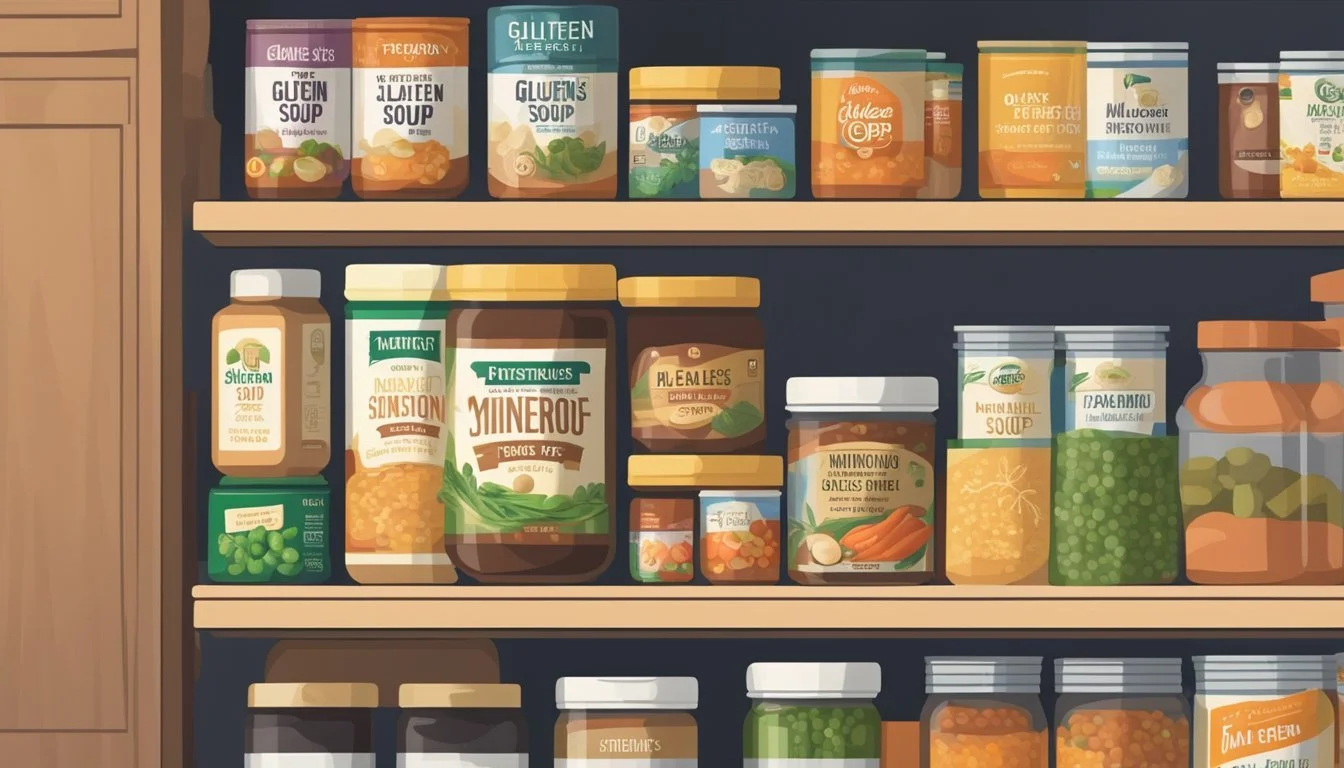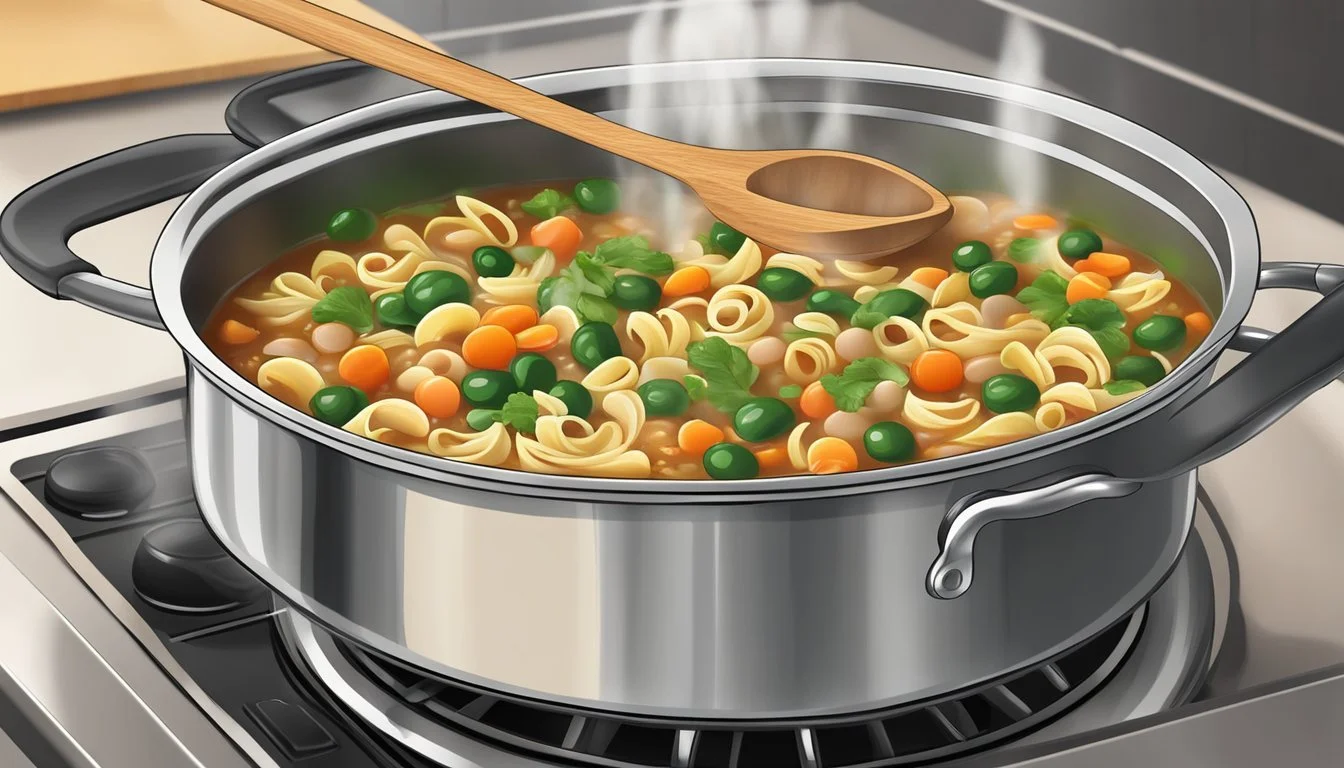How Long Does Gluten-Free Minestrone Soup Last?
Storage Tips and Guidelines
How long does gluten-free minestrone soup last? This is a key question for anyone who has taken the time to prepare this flavorful and nourishing dish. Gluten-free recipes often come with special considerations, especially when it comes to storage and maximizing freshness.
Minestrone soup, with its hearty blend of gluten-free pasta, fresh vegetables, and rich broth, can generally be stored in the refrigerator for up to 4 to 5 days. Properly stored, the soup can maintain its quality and taste, ensuring that you can enjoy it over several meals. For longer-term storage, freezing is an effective option, and the soup can last up to three months in the freezer. Make sure to let the soup cool completely before transferring it to airtight containers.
When you're ready to serve your gluten-free minestrone again, simply reheat it on the stove or in the microwave. Be sure to stir often to maintain an even temperature throughout. By following these storage tips, you can enjoy a delicious and convenient meal whenever you need it.
Understanding Gluten-Free Minestrone Soup
Gluten-free minestrone soup is a nourishing and versatile dish that caters to various dietary needs, offering rich flavors and a hearty texture. Key elements include fresh vegetables, gluten-free pasta, and a blend of beans.
Ingredients and Substitutes
The primary ingredients in gluten-free minestrone soup include onion, carrot, celery, garlic, diced tomatoes, vegetable broth, and gluten-free pasta. The soup can be enriched with vegetables like zucchini and spinach.
Beans such as kidney beans are essential for protein. Italian seasoning adds flavor, while olive oil is used for sautéing.
For substitution, quinoa or rice can replace gluten-free pasta, and different types of beans can be used based on preference.
Health Benefits
Minestrone soup offers several health benefits thanks to its high fiber and nutrient content. It helps in digestion and provides a filling meal with relatively low calories.
Vegetables provide essential vitamins and antioxidants. Beans contribute protein and potassium, making the soup a nutritious choice. The olive oil used in cooking adds healthy fats.
The absence of gluten in gluten-free pasta makes it suitable for individuals with gluten intolerance or celiac disease.
Different Styles of Minestrone
There are various styles of minestrone, reflecting regional Italian cooking traditions. Some versions emphasize seasonal vegetables, while others might incorporate more beans or different herb combinations.
In vegan versions, ingredients like Parmesan cheese are omitted, and more plant-based elements are added.
In summer, lighter variations with fresh vegetables are common. Winter versions might be heartier with root vegetables and more beans.
These variations offer flexibility in flavor and nutrients, making it a customizable dish suitable for diverse tastes and health preferences.
Preparing Gluten-Free Minestrone Soup
Gluten-free minestrone soup is a nutritious and hearty dish. It requires a mix of fresh vegetables, beans, and gluten-free pasta, cooked until tender and served hot.
Cooking Instructions
Start by heating olive oil in a large dutch oven over medium heat. Add diced onion, garlic, celery, and carrots to the pot. Sauté these ingredients for about 5 minutes until they start to soften.
Next, incorporate potatoes, canned tomatoes, cannellini beans, kidney beans, salt, black pepper, Italian seasoning, bay leaf, red pepper, and thyme. Pour in enough broth to cover everything and bring the mixture to a boil.
Reduce the heat to a simmer and cook for 20 minutes, stirring occasionally. Add gluten-free pasta and cook for another 8 minutes, stirring to prevent sticking.
Fold in fresh spinach and cook for an additional 2 minutes. Remove from heat, discard the bay leaf, and your soup is ready.
Serving Suggestions
Ladle the hot soup into bowls and top with freshly grated parmesan cheese and chopped parsley. Alternatively, garnish with basil for an added burst of flavor.
If you’re storing the soup for later, keep the cooked gluten-free pasta in a separate container to prevent it from becoming mushy. When ready to serve, reheat the soup on the stovetop and add the pasta into each bowl just before serving.
Enjoy the soup with a side of gluten-free bread or a fresh garden salad for a complete meal.
Storage and Preservation
Proper storage is essential to maintain the freshness and flavor of gluten-free minestrone soup. Consider the following methods for cooling and storing it in the refrigerator as well as freezing instructions for long-term preservation.
Cooling and Storing
Let the soup cool to room temperature before storing it.
Place the cooled soup in an airtight container to prevent contamination.
Store the container in the refrigerator. Gluten-free minestrone soup typically lasts for 3 to 4 days when properly refrigerated.
Label containers with the date to monitor freshness.
When reheating, ensure the soup reaches a minimum temperature of 165°F (74°C) to ensure it is safe to eat.
Freezing Instructions
For longer storage, freeze gluten-free minestrone soup.
Allow the soup to cool completely before freezing.
Divide the soup into portion-sized containers or freezer bags. This helps with easy thawing and reduces waste.
Ensure containers are airtight and leave space for expansion.
Label with the freezing date.
Frozen soup can be kept for up to 2-3 months.
For defrosting, transfer the container to the refrigerator overnight or use the defrost setting on a microwave.
Reheat on the stove or in a microwave-safe dish, ensuring it reaches 165°F (74°C) before consuming.
Safety and Quality Considerations
Proper storage and awareness of spoilage indicators are crucial to ensure gluten-free minestrone soup remains safe and of high quality.
Optimal Storage Duration
Gluten-free minestrone soup can be stored safely in the refrigerator for 3 to 4 days. It's best kept in an airtight container to maintain its quality. For longer storage, freezing the soup is recommended, where it can last up to 2 months.
When reheating the soup, ensure it reaches an internal temperature of 165°F (74°C) to avoid any potential health risks. Stir well while reheating to evenly distribute the heat.
Signs of Spoilage
Spoiled gluten-free minestrone soup often shows noticeable changes. Mold growth on the surface is a definite sign the soup should be discarded immediately.
An off or sour odor is another indicator of spoilage. Additionally, changes in texture, such as unusual thickness or sliminess, signal that the soup is no longer safe to consume.
A change in taste, including any bitterness or sourness, means the soup has likely gone bad. Always err on the side of caution and discard any soup that seems suspect in terms of smell, texture, or taste.
Culinary Tips and Tricks
A well-prepared gluten-free minestrone soup can be both flavorful and versatile. Implementing simple techniques and exploring recipe variations can greatly enhance the experience.
Enhancing Flavor
To boost the flavor profile of gluten-free minestrone soup, consider using a mix of fresh vegetables like zucchini, carrots, onions, and celery. Sautéing these vegetables in olive oil until they are tender can develop a rich base.
Adding Italian seasonings such as oregano, thyme, and basil can introduce aromatic notes. A few cloves of minced garlic, and a spoonful of tomato paste, cooked briefly, will deepen the soup's taste.
Using a good quality chicken broth or vegetable broth is crucial. For those seeking a vegan alternative, a robust vegetable stock will work well. Adjust the salt and pepper to taste and consider a pinch of red pepper flakes for a slight kick.
Finishing the soup with fresh spinach or kale, stirred in during the last minutes of cooking, adds both color and nutrition. A dairy-free option like nutritional yeast can be used to mimic the umami richness typically contributed by parmesan cheese.
Recipe Variations
Experimenting with different ingredients can yield delightful results. For a protein boost, add cannellini beans or kidney beans. Gluten-free pasta is a staple, but ensure to cook it separately to avoid excess starch.
Substitute quinoa or rice for pasta if preferred. For a heartier version, include potatoes diced into cubes.
For those following a vegan diet, ensure the choice of broth aligns with preferences. Mushrooms can add a meaty texture; crushed tomatoes or tomato sauce can vary the level of acidity and sweetness.
Garnishing with fresh herbs like parsley or basil and a drizzle of good quality olive oil before serving can elevate the dish's presentation and flavor.
Nutritional Information
Gluten-free minestrone soup offers a variety of macro and micronutrients, making it a nutritious choice for many diets. It can accommodate dietary restrictions, including vegetarian and vegan preferences.
Macro and Micronutrients
Gluten-free minestrone soup typically contains a balance of macronutrients such as proteins, carbohydrates, and fats. The primary protein sources are beans, which also provide fiber and important micronutrients like iron and magnesium.
Carbohydrates: These come mainly from the vegetables and any added gluten-free pasta.
Fats: Usually low, often under 5 grams per serving, with minimal saturated fat.
Fiber: High fiber content aids digestion.
Sodium: Can vary, often between 500-1000 mg per serving, depending on the broth and added salt.
Dietary Accommodations
Gluten-free minestrone soup is adaptable to various dietary restrictions.
Gluten-Free: Ensures no wheat, barley, or rye, suitable for those with celiac disease or gluten sensitivity.
Vegetarian and Vegan: Bypasses all animal products, using vegetable broth and beans for protein.
Allergens: Typically free of common allergens like peanuts and dairy, but always verify specific ingredients.
In summary, this versatile soup supports a variety of nutritional needs and restrictions, making it a suitable option for diverse dietary choices.








